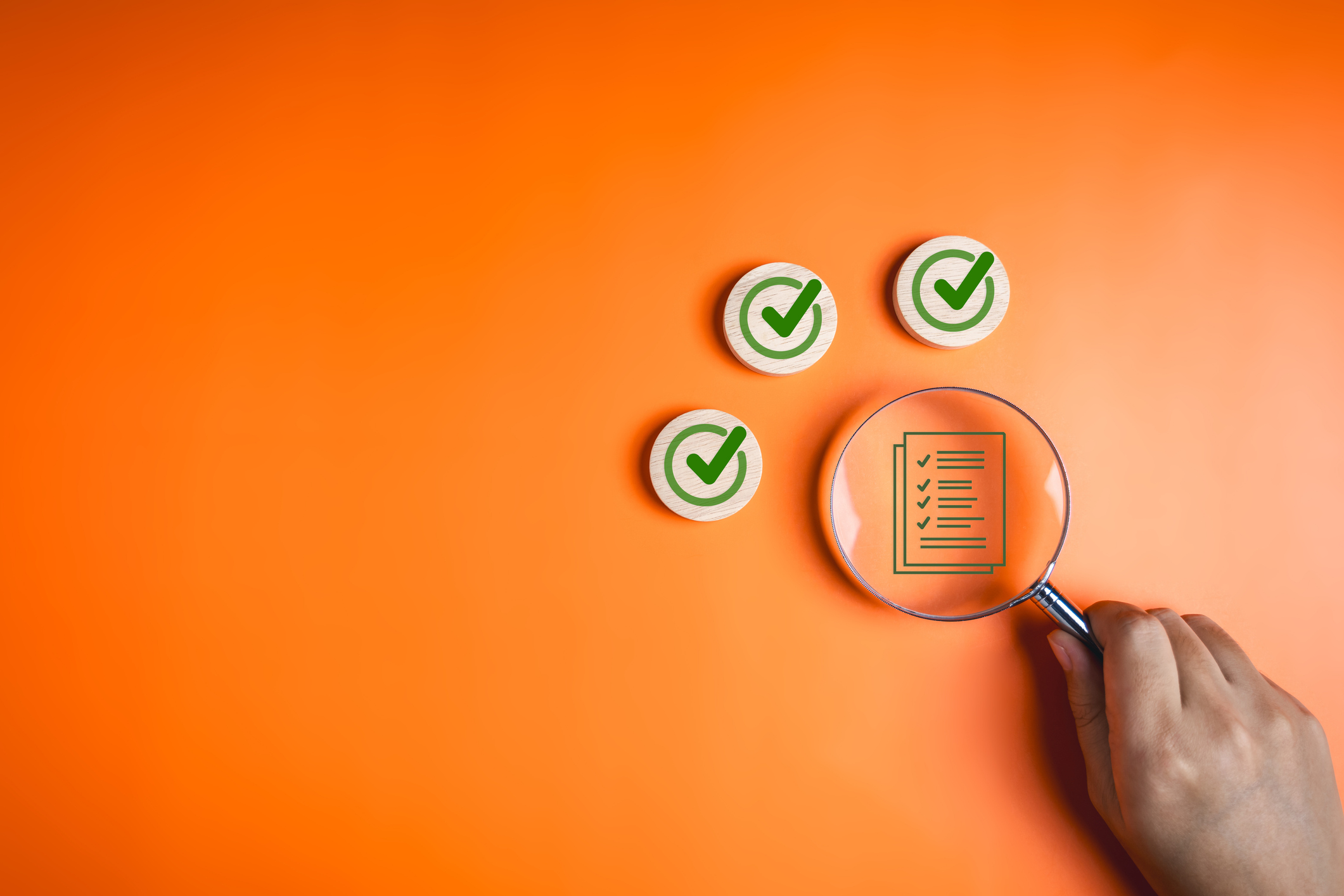An End-of-Year Investing Checklist
December is a great time to get your portfolios in order. Investors can follow this checklist to assess which changes they might or might not need to make.


As 2025 draws to a close, this is a good time to take stock of your portfolios and plan your investment moves for the new year.
This will go down as one of the most volatile years in recent memory, as uncertainty about tariffs and inflation, as well as interest rates and the economy combined with a second-half rotation out of the artificial intelligence (AI) trade and into other sectors.
All three main U.S. equity indexes were holding double-digit gains midway through the last month of the year. That's good. It's easier to make portfolio moves when you're sitting on gains, and you're not under pressure from a falling market.
From just $107.88 $24.99 for Kiplinger Personal Finance
Become a smarter, better informed investor. Subscribe from just $107.88 $24.99, plus get up to 4 Special Issues

Sign up for Kiplinger’s Free Newsletters
Profit and prosper with the best of expert advice on investing, taxes, retirement, personal finance and more - straight to your e-mail.
Profit and prosper with the best of expert advice - straight to your e-mail.
This is exactly why you should act today, while the market is calm and the outlook generally rosy.
Here's an end-of-year investing checklist to help you finish the year strong and start the next one on the right foot.
Review your 401(k) contributions
Not every year looks like 2025. You generally shouldn't expect the magnitude of the ups and downs we saw. At 17% as of December 11, the S&P 500 is tracking toward another total return (price change plus dividends) well above its long-term average annual gain of approximately 10%.
There's one way you can consistently earn returns well in excess of 20% ... and do so within your company 401(k) plan.
Let's say you're in the 22% marginal tax bracket (for 2025, that's single taxpayers earning $48,475 to $103,350, or married filing jointly taxpayers earning $96,950 to $206,700). You earn a 22% "return" on every dollar you put into your 401(k) based on the tax break. Your employer might also offer matching contributions to your retirement plan, in which case you could potentially be earning even more.
Tax deductions and matching aren't "returns," technically speaking, and you'll eventually have to pay taxes once you start taking distributions. But a dollar in taxes deferred for years or possibly decades is as good as a dollar earned.
If you can swing it, try to boost your contribution for your last paycheck or two of 2025. The maximum you can contribute this year is $23,500, or $31,000 if you're 50 or older.
It's also in your best interest to keep your contribution level high going into 2026. It's a lot easier to hit that $23,500 to $31,000 savings bogey if you start early, considering it gets divided over a larger number of paychecks. The longer you wait, the harder it is to max out your account contributions.
Your first end-of-year checklist item is to start with the low-hanging fruit: Review your 401(k) contributions and boost them if at all possible.
Sell underperforming stocks, consider QCDs
Given the market's performance this year, you might not have a lot of losses to harvest. But if you have a few investments that didn't quite work out and are currently in the red, you can sell them to realize the loss and offset gains in other parts of your portfolio.
This can help lower your taxable income for the year and reduce your capital gains tax liability. Just remember to avoid the wash sale rule, which prohibits you from repurchasing the same or substantially identical security within 30 days.
If you're 73 or older, you might be forced to take required minimum distributions (RMDs) from your IRA or 401(k) plan. Unfortunately, this can leave you with a large tax bill, particularly if you're still working or have income from other sources.
If you don't need your RMD to cover your basic living expenses, consider using them to make a qualified charitable distribution (QCD). A QCD allows you to donate up to $108,000 per year directly from your IRA to a qualified charity without having to pay income taxes on the distribution.
If you plan to donate to charity anyway, a QCD is the smartest and most tax-efficient way to do it because it never shows up as income on your tax return. It bypasses it altogether and goes straight to the charity. Every dollar you save in taxes is an extra dollar to donate to a cause you care about.
Rebalance your portfolio
Rebalancing your portfolio is critically important in managing your risk. This is especially true after a year like 2025 in which you might find that some stocks have ballooned to become overweight positions. Perhaps your portfolio is heavy in stocks relative to bonds, real estate or other asset classes.
Use this as an opportunity to sell off some oversize positions and reallocate funds into bonds, cash or other under-allocated assets.
The end of the year is also a great time to assess whether your risk tolerance has changed. If you're nearing retirement or a major life event, consider shifting a portion of your assets into more stable investments, such as bonds or dividend-paying stocks.
As you're likely to be with family this time of year, use the time to review your estate plan. Life changes such as marriage, divorce, the birth of a child or changes in financial circumstances may require revisions.
You should also take a moment to check that the beneficiaries on your retirement accounts, life insurance policies and other investment accounts are still accurate.
You wouldn't want for your spouse or new child or grandchild to be disinherited because you forgot to update the paperwork … and you certainly wouldn't want your ex-husband or ex-wife to end up with your life's savings.
None of these moves are particularly difficult or time-consuming, but all have the potential to make or break your retirement.
Grab a cup of coffee and take a few minutes to take charge of your financial future.
Related content
Profit and prosper with the best of Kiplinger's advice on investing, taxes, retirement, personal finance and much more. Delivered daily. Enter your email in the box and click Sign Me Up.

Charles Lewis Sizemore, CFA is the Chief Investment Officer of Sizemore Capital Management LLC, a registered investment advisor based in Dallas, Texas, where he specializes in dividend-focused portfolios and in building alternative allocations with minimal correlation to the stock market.
-
 How to Avoid the Financial Quicksand of Early Retirement Losses
How to Avoid the Financial Quicksand of Early Retirement LossesSequence of returns — experiencing losses early on — can quickly deplete your savings, highlighting the need for strategies that prioritize income stability.
-
 How an Elder Law Attorney Can Help Protect Your Aging Parents
How an Elder Law Attorney Can Help Protect Your Aging ParentsIf you are worried about older family members or friends whose financial judgment is raising red flags, help is out there — from an elder law attorney.
-
 Q4 Post-Mortem From an Investment Adviser: Year of Resilience
Q4 Post-Mortem From an Investment Adviser: Year of ResilienceFinancial pro Prem Patel shares his take on how markets performed in the fourth quarter of 2025, with an eye toward what investors should keep in mind for 2026.
-
 This Is How Early Retirement Losses Can Dump You Into Financial Quicksand (Plus, Tips to Stay on Solid Ground)
This Is How Early Retirement Losses Can Dump You Into Financial Quicksand (Plus, Tips to Stay on Solid Ground)Sequence of returns — experiencing losses early on — can quickly deplete your savings, highlighting the need for strategies that prioritize income stability.
-
 How an Elder Law Attorney Can Help Protect Your Aging Parents From Financial Mistakes
How an Elder Law Attorney Can Help Protect Your Aging Parents From Financial MistakesIf you are worried about older family members or friends whose financial judgment is raising red flags, help is out there — from an elder law attorney.
-
 Q4 2025 Post-Mortem From an Investment Adviser: A Year of Resilience as Gold Shines and the U.S. Dollar Dives
Q4 2025 Post-Mortem From an Investment Adviser: A Year of Resilience as Gold Shines and the U.S. Dollar DivesFinancial pro Prem Patel shares his take on how markets performed in the fourth quarter of 2025, with an eye toward what investors should keep in mind for 2026.
-
 'Donroe Doctrine' Pumps Dow 594 Points: Stock Market Today
'Donroe Doctrine' Pumps Dow 594 Points: Stock Market TodayThe S&P 500 rallied but failed to turn the "Santa Claus Rally" indicator positive for 2026.
-
 Is Your Emergency Fund Running Low? Here's How to Bulk It Back Up
Is Your Emergency Fund Running Low? Here's How to Bulk It Back UpIf you're struggling right now, you're not alone. Here's how you can identify financial issues, implement a budget and prioritize rebuilding your emergency fund.
-
 An Expert Guide to How All-Assets Planning Offers a Better Retirement
An Expert Guide to How All-Assets Planning Offers a Better RetirementAn "all-asset" strategy would integrate housing wealth and annuities with traditional investments to generate more income and liquid savings for retirees.
-
 7 Tax Blunders to Avoid in Your First Year of Retirement, From a Seasoned Financial Planner
7 Tax Blunders to Avoid in Your First Year of Retirement, From a Seasoned Financial PlannerA business-as-usual approach to taxes in the first year of retirement can lead to silly trip-ups that erode your nest egg. Here are seven common goofs to avoid.
-
 How to Plan for Social Security in 2026's Changing Landscape, From a Financial Professional
How to Plan for Social Security in 2026's Changing Landscape, From a Financial ProfessionalNot understanding how the upcoming changes in 2026 might affect you could put your financial security in retirement at risk. This is what you need to know.